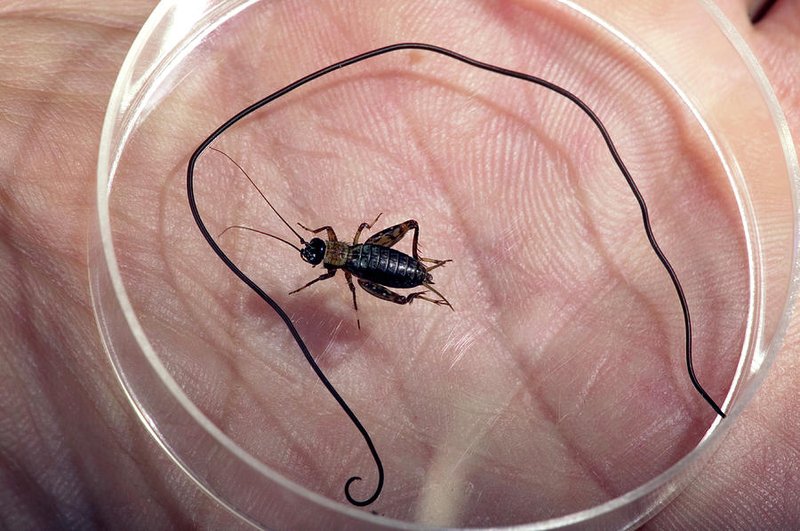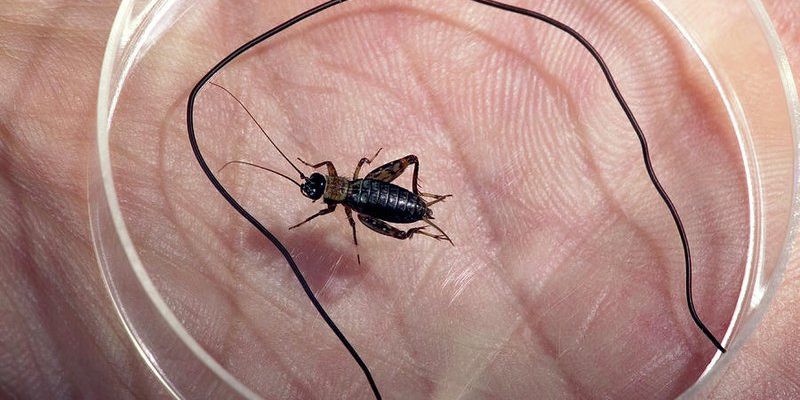
When it comes to choosing *field cameras*, there are plenty of options out there, but a brand like Bushnell or Reconyx offers great reliability. These cameras are designed for the outdoors, allowing you to capture high-resolution images or videos without getting too close and scaring away your subjects. So, whether you’re aiming to document hairworms in their natural environment or just wanting to dive deeper into their unique behavior, understanding how to use these cameras effectively is key.
Understanding Hairworms: What Are They?
You might be wondering, “What exactly is a hairworm?” Hairworms, or *nematomorphs*, are long, thin parasites that infect various insects, especially grasshoppers and crickets. These intriguing creatures start their lives as tiny larvae, budding inside their hosts and growing silently until it’s time to break free. Picture this: while an unsuspecting grasshopper hops around enjoying its day, a hairworm is stealthily pulling the strings from within.
Once fully developed, hairworms manipulate their host’s brain, leading them to water. It’s as if the hairworm has a remote control, guiding its host straight into a watery grave. This is where the hairworm can emerge and continue its life cycle. It’s a bit gruesome, but also incredibly fascinating—a true survival story in the animal kingdom.
Why Use Field Cameras to Document Hairworm Behavior?
So, why choose to document hairworm behavior using field cameras? The answer is pretty straightforward: it allows you to observe these creatures without interfering with their natural actions. Remember, hairworms are notorious for their stealthy and manipulative behavior, so any disturbance could change the outcome of your observations.
Field cameras capture high-quality images and videos, giving you visual evidence of hairworm-host interactions. You might catch a glimpse of a grasshopper moving towards a water source, seemingly compelled by something invisible. There’s a certain thrill in watching this unfold, almost like being on a wildlife documentary set without ever leaving your backyard.
Choosing the Right Field Camera
Choosing the right field camera is crucial for documenting hairworm behavior effectively. Here are some factors to consider:
- Resolution: Opt for a camera with at least 1080p resolution for clear images. High resolution helps you capture the details of host interactions.
- Trigger Speed: A quick trigger speed (like under 0.5 seconds) is essential for capturing action shots. You never know when a grasshopper might jump into a scene!
- Battery Life: Long battery life ensures that your camera won’t die when you need it most. Some models can last several months.
- Weather Resistance: Since you’ll be placing these cameras outdoors, make sure they’re built to withstand the elements—rain, wind, and humidity.
Brands like Browning or Stealth Cam often have great options tailored for wildlife tracking, making them excellent choices for your hairworm documentation project.
Setting Up Your Field Camera
Now that you’ve got your field camera, it’s time to set it up for maximum effectiveness. Here’s a simple step-by-step guide:
1. Find a Good Location: Look for areas where grasshoppers and crickets are abundant. Near water sources can be ideal, as this is likely where hairworms will manipulate their hosts.
2. Mount the Camera: Secure your camera a few feet off the ground, aiming it towards the area you’re interested in. Make sure it’s stable and won’t be easily knocked over by wind or curious animals.
3. Test the Camera: Before leaving it for extended periods, do a few test shots. Ensure it captures in the right direction and has enough memory space for your anticipated footage.
4. Check Regularly: Aim to check on your camera every few days or weeks, depending on your specific research goals. This lets you change batteries if needed and review the footage frequently.
Setting up the camera doesn’t have to be daunting. Just be patient, and you’ll be on the way to capturing fascinating moments in the life of hairworms.
What to Expect When Observing Hairworm Behavior
When you finally start documenting with your field camera, it’s important to manage your expectations. Football players don’t score every play, and the same goes for wildlife observation. You may not see hairworms every time, but the potential for discovery is what makes this exciting.
You might witness grasshoppers exhibiting unusual behavior, like erratic movement toward water or curling up before jumping. This “peculiar dance” gives hints that something is at play—likely the hairworm pulling the strings. Each bizarre action can help you understand the parasite’s life cycle and its impact on the host.
It’s also essential to keep a record of your observations. Jot down notes about the date, time, and weather conditions during your sessions. This data can help in identifying patterns over time.
Analyzing Your Footage
After a few weeks of capturing footage, it’s time to dive into your observations. Watching video clips can feel like piecing together a puzzle. Here’s how to analyze what you’ve collected:
1. Review and Edit: Start by watching all your footage. Look for the standout moments—those key behaviors that exhibit the hairworm’s influence.
2. Take Notes: Jot down any intriguing behaviors that might suggest hairworm manipulation. Does a grasshopper behave differently when it’s close to water? These notes will help you correlate your observations with potential hairworm activity.
3. Compare Footage: If you have multiple clips, look for patterns across different days or locations. This could reveal how environmental factors influence host behavior.
4. Share Your Findings: If you find something particularly interesting, consider sharing your results. Social media platforms or local nature clubs are excellent outlets for such exciting discoveries. You might inspire others to document hairworm behavior too!
Common Challenges and Troubleshooting
Like anything worthwhile, documenting hairworm behavior can come with challenges. Here are some common issues and how to solve them:
- Camera Not Triggering: If your camera doesn’t capture any images, check the settings. Ensure that the motion detection sensitivity is set high enough and that there’s enough battery life.
- Poor Image Quality: If the images are grainy, it might be due to low light. Try positioning your camera in brighter spots, or consider cameras with better nighttime capabilities.
- Animal Interference: Sometimes, curious animals can trigger your camera without being your target. Use a motion-activated camera with adjustable sensitivity to limit unnecessary captures.
Troubleshooting these common concerns can save you time and help you catch the most significant moments of hairworm behavior.
Documenting the behavior of hairworms with field cameras opens a window into one of nature’s most intriguing relationships. By understanding these creatures and the tools available, you set the stage for exciting discoveries. With the right camera, patience, and observation skills, you can witness the compelling interaction between hairworms and their hosts.
Whether you’re capturing bizarre behaviors or learning about the delicate balance of nature, this journey is one of curiosity and passion. So grab your field camera, head outdoors, and begin your adventure into the world of hairworms—it’s bound to be an eye-opening experience!

